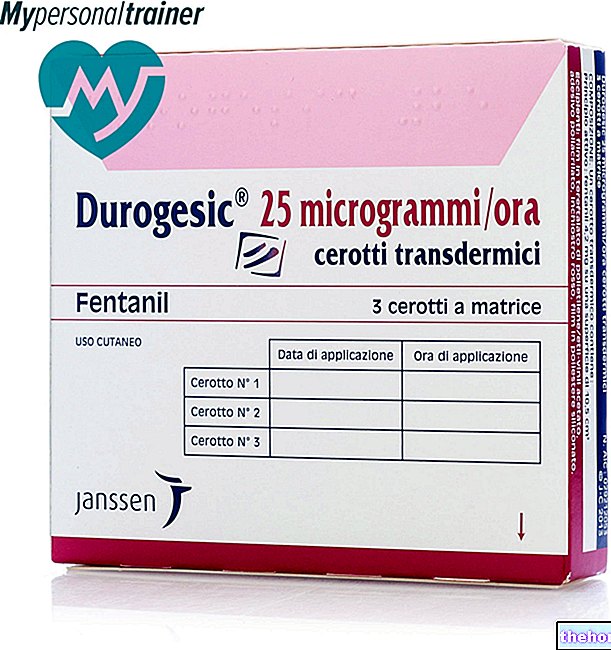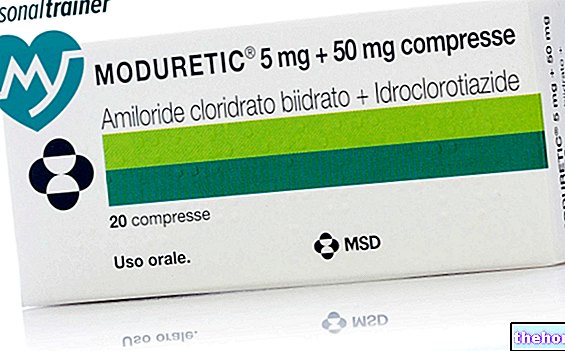Active ingredients: Calcium, Cholecalciferol
NATECAL D3 600 mg + 400 I.U. chewable tablets
Natecal D3 package inserts are available for pack sizes:- NATECAL D3 600 mg + 400 I.U. chewable tablets
- NATECAL D3 600 mg + 400 I.U. orodispersible tablets
Why is Natecal D3 used? What is it for?
Natecal D3 chewable tablets contain two active ingredients, calcium carbonate and cholecalciferol (vitamin D3) which are normally taken with the diet; moreover, vitamin D is produced in the skin after sun exposure. Natecal D3 Chewable Tablets can be prescribed by your doctor for the treatment and prevention of Vitamin D and calcium deficiencies.
Natecal D3 is used:
- for the correction of calcium and vitamin D deficiency in the elderly.
- in association with the treatment of osteoporosis when the levels of calcium and vitamin D are too low or in the presence of a high risk of them falling too low.
Contraindications When Natecal D3 should not be used
Do not take Natecal D3
- if you are allergic to calcium, vitamin D3 or to any of the ingredients in Natecal D3 (especially "soybean oil);
- if you have high levels of calcium in the blood (hypercalcemia) or in the urine (hypercalciuria);
- if you have severe kidney problems
- if you have kidney stones;
- if you have high levels of vitamin D in your blood (hypervitaminosis D).
Precautions for use What you need to know before taking Natecal D3
Warnings and Precautions
- if you have ever had kidney stones or other kidney problems (your doctor will closely monitor your treatment with Natecal D3 if your kidneys are not working properly to prevent the calcium in your blood from getting too high);
- if you are immobilized in bed for a long time (months) and suffer from osteoporosis (brittle bones) as you may have high levels of calcium in your blood;
- if you are taking other medicines containing calcium or vitamin D3, your doctor or pharmacist will tell you what to do;
- if you have sarcoidosis, your doctor will tell you what to do;
Interactions Which drugs or foods can modify the effect of Natecal D3
Other medicines and Natecal D3
Do not take Natecal D3, without informing your doctor or pharmacist, if you are taking:
- any other medicines containing vitamin D;
- the following heart medicines: digitalis or other cardiac glycosides;
- antibiotics of the tetracyclines and fluoroquinolones type; it is recommended that at least 3 hours have elapsed after taking them before taking Natecal D3 chewable tablets.
- thiazide diuretics;
- if you are using other medicines to treat bone diseases, such as bisphosphonates or sodium fluoride, it is recommended that at least 3 hours elapse after taking them before taking Natecal D3 chewable tablets.
- Phenytoin (medicine for epilepsy) and barbiturates (medicines used for epilepsy or to promote sleep), as they decrease the action of vitamin D3.
- Rifampicin, as it makes vitamin D3 less effective
- Orlistat (medicine to treat obesity), cholestyramine, laxatives such as paraffin oil, as they can reduce the absorption of vitamin D3.
- Estramustine (medicine used in chemotherapy), thyroid hormones or iron, zinc or strontium ranelate medicines, as the amount absorbed may be reduced. These medicines should be taken at least 2 hours before or after taking Natecal D3.
Natecal D3 with food and drink
This medicine can interact with some foods, for example those that contain oxalic acid (such as spinach, rhubarb, sorrel, cocoa, tea, etc), phosphate (such as ham, sauces, melted cheese, etc) or phytic acid (such as legumes, cereals wholemeal, chocolate, etc). Therefore it is recommended to take Natecal D3 two hours before or after a meal of these foods.
Warnings It is important to know that:
Pregnancy and breastfeeding
Natecal D3 Chewable Tablets should only be used during pregnancy and breastfeeding if recommended by your doctor.
Important information about some of the ingredients of Natecal D3
The product contains: sorbitol (E 420), aspartame (E 951), lactose, hydrogenated soybean oil, sucrose.
The product contains aspartame, which is a source of phenylalanine. Phenylalanine can be dangerous for patients with phenylketonuria;
The product contains lactose, sucrose and sorbitol, so if your doctor has advised you that you have an intolerance to some sugars, contact him before taking Natecal D3.
The product contains soybean oil, so if you are allergic to peanut or soy, do not take this medicine.
Dose, Method and Time of Administration How to use Natecal D3: Posology
Always take Natecal D3 exactly as your doctor has told you. If in doubt you should consult your doctor. The usual dose for Adults and Elderly Patients is one chewable tablet twice a day (e.g. once in the morning and once in the evening) taken preferably after meals. The tablets should be chewed or allowed to dissolve in the mouth, they should not be swallowed whole.
Overdose What to do if you have taken too much Natecal D3
If you take more Natecal D3 than you should
Contact your doctor. If you are unable to do this, go to the nearest emergency room, taking the remaining tablets and the box with you.
If you forget to take Natecal D3
Take the tablet as soon as possible. Afterward, take your next dose at the usual time. However, if it is almost time for your next dose, skip the missed dose and continue as usual. Never take a double dose to make up for a forgotten dose.
Side Effects What are the side effects of Natecal D3
Like all medicines, Natecal D3 can cause side effects, although not everybody gets them.
The following side effects are uncommon (affecting 1 to 10 in every 1,000 patients):
- hypercalcaemia (blood calcium levels that are too high) - symptoms are nausea, vomiting, loss of appetite, constipation, stomach pain, bone pain, excessive thirst, an urge to urinate more than usual, muscle weakness, sleepiness and confusion;
- hypercalciuria (calcium levels in the urine that are too high);
The following side effects are rare (affecting 1 to 10 patients in 10,000):
- nausea;
- stomach ache;
- constipation;
- diarrhea;
- flatulence
- itch
- rash
- urticaria
The frequency of the following side effects is not known (cannot be estimated from the available data):
- Severe allergic reactions (hypersensitivity) such as eg. swelling of the face, lips or tongue.
Reporting of side effects
If you get any side effects, talk to your doctor or pharmacist. This includes any possible side effects not listed in this leaflet. You can also report side effects directly via the national reporting system at https://www.aifa.gov.it/content/segnalazioni-reazioni-avverse. By reporting side effects you can help provide more information on safety. of this medicine.
Expiry and Retention
Store in the original container to protect from moisture. Keep Natecal D3 out of the sight and reach of children. Do not take Natecal D3 after the expiry date which is stated on the carton after the abbreviation "EXP". The expiry date refers to the last day of the month. Medicines should not be disposed of via wastewater or household waste. Ask your pharmacist how to throw away medicines you no longer use. This will help protect the environment.
Composition and pharmaceutical form
What Natecal D3 contains
- Each tablet contains the active ingredients: calcium carbonate (1500 mg equivalent to 600 mg of calcium) and cholecalciferol (vitamin D3) (400 I.U equivalent to 0.01 mg).
- The other ingredients are: sorbitol (E 420), maltodextrin, croscarmellose sodium (E 468), aspartame (E 951), sodium saccharin (E 954), lactose monohydrate, anise flavor, mint flavor, molasses flavor, magnesium stearate, DL-α -tocopherol (E 307), hydrogenated soybean oil, gelatin, sucrose, corn starch.
Description of what Natecal D3 looks like and contents of the pack
The tablets are circular in shape with beveled edges, are white or almost white with the "D" engraved on one side only.
Bottle containing 12 or 60 masticalyl tablets.
Source Package Leaflet: AIFA (Italian Medicines Agency). Content published in January 2016. The information present may not be up-to-date.
To have access to the most up-to-date version, it is advisable to access the AIFA (Italian Medicines Agency) website. Disclaimer and useful information.
01.0 NAME OF THE MEDICINAL PRODUCT
NATECAL D3
02.0 QUALITATIVE AND QUANTITATIVE COMPOSITION
Each tablet contains:
Calcium carbonate 1500 mg (equivalent to 600 mg of calcium)
Cholecalciferol (Vitamin D3) 400 IU (equivalent to 0.01 mg)
For excipients see 6.1
03.0 PHARMACEUTICAL FORM
Chewable tablets
The tablets are circular in shape with beveled edges, are white or almost white with the "D" engraved on one side only.
04.0 CLINICAL INFORMATION
04.1 Therapeutic indications
Correction of combined vitamin D and calcium deficiency in the elderly; intake of vitamin D and calcium as a supplement to specific therapy for the treatment of osteoporosis in patients with combined vitamin D and calcium deficiency, or in patients with a high risk of such deficiency .
04.2 Posology and method of administration
1-2 tablets per day.
The tablets should be chewed or allowed to dissolve in the mouth, they should not be swallowed whole.
The product is administered orally, preferably after meals.
For use in adults only.
04.3 Contraindications
Hypersensitivity to calcium, cholecalciferol or to any of the excipients.
Hypercalcemia, hypercalciuria.
Kidney stones (nephrolithiasis, nephrocalcinosis).
Kidney failure.
Prolonged immobilization, accompanied by hypercalciuria and / or hypercalcemia.
04.4 Special warnings and appropriate precautions for use
- In case of prolonged treatment it is advisable to monitor the calcium level in serum and urine and to monitor renal function by measuring serum creatinine. Monitoring is especially important in elderly patients already being treated with cardiac glycosides or diuretics. In case of hypercalcaemia or renal insufficiency, reduce the dose or discontinue treatment.
It is recommended to reduce or temporarily stop treatment if the calcium level in the urine exceeds 7.5 mmol in 24 hours (300 mg in 24 hours).
Consider the dose of vitamin D (400 IU) when taking other medicines that contain vitamin D or foods supplemented with vitamin D.
Additional administrations of vitamin D or calcium must be carried out under strict medical supervision. In these cases it is absolutely necessary to regularly monitor the serum and urinary levels of calcium.
The product should be prescribed with caution to patients suffering from sarcoidosis, due to the possible increase in the metabolism of vitamin D in its active form. In these patients, the level of calcium in serum and urine should be monitored.
Patients with renal insufficiency have an impaired metabolism of vitamin D; therefore, if they are to be treated with cholecalciferol, the effects on calcium and phosphate homeostasis should be monitored.
The product contains aspartame, a source of phenylalanine equivalent to 2.8 mg / dose. It can be harmful to patients with phenylketonuria.
The product contains lactose; therefore patients with rare hereditary problems of galactose intolerance, the Lapp lactase deficiency, and glucose / galactose malabsorption syndrome should not take this medicinal product.
The product contains sorbitol 0.565 g / dose, a source of 0.141 g of fructose; therefore patients with rare hereditary problems of fructose intolerance should not take this medicine.
The presence of sorbitol can cause stomach problems and diarrhea.
The product contains sucrose; therefore patients with rare hereditary problems of fructose intolerance, glucose / galactose malabsorption syndrome or sucrase-isomaltase insufficiency should not take this medicinal product. It can be bad for your teeth.
The product contains partially hydrogenated soybean oil which can rarely cause severe allergic reactions.
04.5 Interactions with other medicinal products and other forms of interaction
The concomitant use of phenytoin or barbiturates may reduce the effect of vitamin D3 by metabolic inactivation.
In case of concomitant treatment with diphosphonate, sodium fluoride or oral tetracyclines, it is recommended to allow a period of at least three hours before taking the drug (risk of decreased gastrointestinal absorption of diphosphonate, sodium and tetracyclines)
In the case of treatment with thiazide diuretics, which reduce the urinary elimination of calcium, monitoring of serum calcium concentrations is recommended.
Concomitant use of glucocorticosteroids may reduce the effect of vitamin D3.
When treated with digitalis-containing drugs, oral administration of calcium combined with vitamin D increases the risk of digitalis toxicity (arrhythmia). Therefore, close medical supervision and, if necessary, monitoring electrocardiography and serum calcium concentrations are required.
Interactions may occur with foods (eg those that contain oxalic acid, phosphate or phytic acid or have a high fiber content).
04.6 Pregnancy and lactation
NATECAL D3 can be used during pregnancy and breastfeeding. However, the daily dose should not exceed 1500 mg of calcium and 600 I.U. of vitamin D.
In pregnancy, an overdose of cholecalciferol should be avoided.
Teratogenic effects of cholecalciferol overdose have been observed in animals.
Overdose of cholecalciferol should be avoided in pregnant women, as hypercalcaemia can lead to delayed physical and mental development, supravalvular aortic stenosis and retinopathy in the child.
However, there have been numerous reports of administration of high doses in mothers with hypoparathyroidism, without consequences for the child.
Vitamin D and its metabolites pass into breast milk.This must be taken into account in case of additional vitamin D administration to the infant.
04.7 Effects on ability to drive and use machines
No data are available on the effects of the product on the ability to drive. However, such an effect is unlikely.
04.8 Undesirable effects
Constipation, flatulence, nausea, stomach pain, diarrhea.
Hypercalciuria and hypercalcemia in case of prolonged treatments with high doses.
04.9 Overdose
Overdose manifests itself as hypercalciuria and hypercalcemia, the symptoms of which are as follows: nausea, vomiting, thirst, polydipsia, polyuria, constipation and dehydration.
Chronic overdoses can lead to vascular and organ calcification as a result of hypercalcemia.
Treatment
Discontinue the administration of calcium and vitamin D3 and proceed with rehydration.
05.0 PHARMACOLOGICAL PROPERTIES
05.1 Pharmacodynamic properties
Pharmacotherapeutic group: calcium, combinations with other drugs
ATC code: A12AX
Vitamin D corrects a deficiency situation and increases the intestinal absorption of calcium.
The optimal need for vitamin D in elderly subjects is 500-1000 I.U. per day.
Calcium intake corrects dietary calcium deficiency.
The commonly recognized need for calcium in elderly subjects is 1500 mg per day.
Vitamin D and calcium correct secondary senile hyperparathyroidism.
05.2 "Pharmacokinetic properties
Calcium carbonate
Calcium carbonate releases calcium ions into the acidic environment of the stomach. Calcium, administered as calcium carbonate, is absorbed by 20-30% and absorption occurs mainly in the duodenum thanks to an active vitamin D dependent, saturable transport.
Calcium is eliminated in the urine, faeces and through sweat.
Urinary excretion of calcium is a function of glomerular filtration and tubular reabsorption of calcium.
Vitamin D
Vitamin D is absorbed in the small intestine where it binds to specific a-globulins and transported to the liver where it is metabolized to 25-hydroxy-cholecalciferol. A second hydroxylation to 1,25-dihydroxy-cholecalciferol occurs in the kidneys. This metabolite is responsible. increased calcium absorption.
Unmetabolized vitamin D is stored in fat and muscle tissues.
Vitamin D is eliminated in the faeces and urine.
05.3 Preclinical safety data
The available data are not of significant significance.
06.0 PHARMACEUTICAL INFORMATION
06.1 Excipients
Sorbitol
Maltodextrin
Croscarmellose sodium
Aspartame
Sodium saccharin
Lactose monohydrate
Anise flavoring (flavoring agents identical to natural substances, natural flavoring preparations, maltodextrins)
Mint flavor (natural flavoring preparations, maltodextrin, pulegone)
Molasses flavor (flavoring agents identical to natural substances, natural flavoring preparations, maltodextrin, triethyl citrate)
Magnesium stearate.
DL-a-tocopherol
Partially hydrogenated soybean oil
Jelly
Sucrose
Cornstarch
06.2 Incompatibility
Not relevant
06.3 Period of validity
2 years
06.4 Special precautions for storage
Store in original container to protect from moisture.
06.5 Nature of the immediate packaging and contents of the package
High density polyethylene bottle with closure of the same material that contains inside a capsule of silica gel as a desiccant.
The bottle contains 60 chewable tablets.
06.6 Instructions for use and handling
No particular.
07.0 MARKETING AUTHORIZATION HOLDER
Italfarmaco S.p.A. - Viale Fulvio Testi, 330 - 20126 Milan
08.0 MARKETING AUTHORIZATION NUMBER
NATECAL D3 600 mg + 400 I.U. chewable tablets - 60 tablets
AIC: 034899017
09.0 DATE OF FIRST AUTHORIZATION OR RENEWAL OF THE AUTHORIZATION
April 2001
10.0 DATE OF REVISION OF THE TEXT
01/07/2002




























